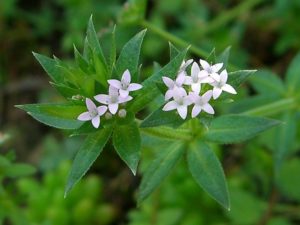Aromatic madder is originally endemic to Southeastern Europe, Western Asia and North Africa, but was early on introduced to the Central and Northwestern Europe where it became naturalized.
Uses
-
Used for in the folk and traditional medicine.
Benefits
- Despite serious safety concerns, people take madder by mouth for preventing and dissolving kidney stones, as well as and for treating general menstrual disorders, and urinary tract disorders, blood disorders, bruises, jaundice, paralysis, spleen disorders, and sciatica. It is also used to promote urination, as an aphrodiasiac, and as a tonic.
- Madder is also applied to the skin for certain skin conditions and to promote wound healing.
Cautions
- Madder is considered LIKELY UNSAFE when taken by mouth. The chemicals in madder may cause cancer. Madder can also cause urine, saliva, perspiration, tears, and breast milk to turn red in color.
- Special Precautions & Warnings:
- Pregnancy and breast-feeding: It’s UNSAFE to take madder by mouth if you are pregnant. It might start your menstrual period and that could cause a miscarriage. Madder might also cause birth defects.
- It’s also UNSAFE to use madder if you are breast-feeding. It might harm the nursing baby, and it might turn breast milk red.
Interactions
Please consult with your doctor.
Other names
Bengal Madder, Dyer’s Madder, Fäberröte, Garança, Garance, Garance des Teinturiers, Granza, Indian Madder, Krapp, Robbia, Rouge des Teinturiers, Rubia, Rubia de Tintas, Rubia tinctorum, Rubiae Tinctorum Radix
References
Source: WebMD, http://www.webmd.com/vitamins-supplements/ingredientmono-557-MADDER.aspx?activeIngredientId=557&activeIngredientName=MADDER
Somaluna, http://www.somaluna.com/botanicals/herbs-m-o/aromatic-madder-root/

